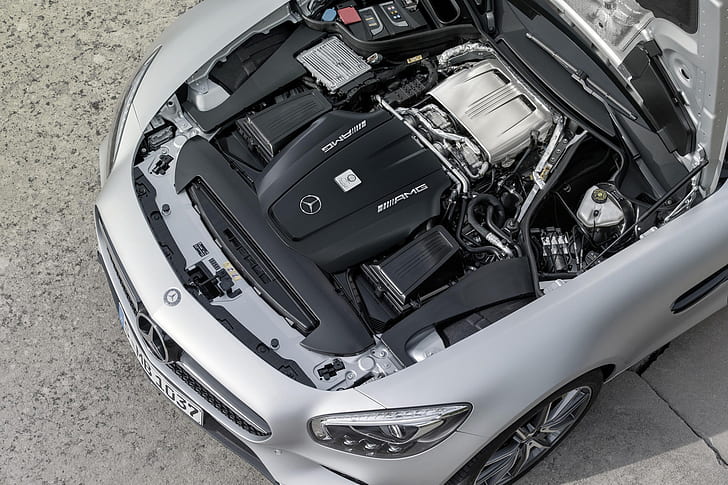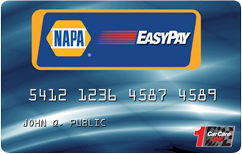
German cars are known for being well engineered and offering autobahn-inspired performance, ride quality and comfort. That premium quality can come at a price, however, when it comes to maintaining and repairing your vehicle. Whether you own a BMW, Mercedes, Audi or Volkswagen, there are several ways that you can save on German auto repair in San Diego and we have compiled a list of our Top 12 Tips below.
Do Your Homework Before Buying A Used German Car
One of the best ways to save money on German auto repair is to do as much research as you can before you buy the car. As you hone in on the specific car that you want, familiarize yourself with that vehicle’s maintenance schedule, common issues with certain model years, and recalls and technical service bulletins. Oftentimes a seller may be approaching a major scheduled service or trying to avoid an expensive looming repair (such as replacing the timing belt or clutch) when putting their vehicle up for sale. Knowing the car’s mileage and the upcoming maintenance schedule will help you better budget for expenses and negotiate a fair price. Similarly, learning what the most common issues are for certain model years will help you ask the right questions and avoid unwanted surprises. Searching on vehicle brand/model specific internet forums is a great way to crowdsource information, as are Technical Service Bulletins, which are notices that manufacturers issue for common problems that arise outside of regular scheduled maintenance. Websites such as the NHTSA are also available to help you look up Safety Recall information. Ask the seller if they’ve encountered the common issues and if there are any unaddressed maintenance tasks or safety recalls, ask why they have not dealt with them.
When considering a used BMW, Mercedes, Audi or Volkswagen, always look for a detailed maintenance history and assess the type of owner that is selling it. There can be a world of difference in terms of vehicle condition and future reliability depending on whether the car comes from an owner who is a passionate enthusiast that has pampered the car with religious maintenance versus an apathetic owner who likely deferred maintenance and procrastinated dealing with issues. Detailed service records and a vehicle history report (e.g. Carfax) will provide a backstop to your assessment here. Check if there are scheduled maintenance services missing from the records and ask about them, as well as what unexpected issues the seller has had to deal with during their ownership.
Be Patient When Searching For A Used Car
So you’ve done all your homework, have your finances lined up and are ready to find your perfect German automobile…let the search begin! Rather than getting overly excited and making a quick decision, it is best to prepare yourself to be patient and find the right example to buy. It can be tiring to constantly search in various places in both the real world and online for your dream ride, to ask similar questions to multiple owners and try and sift through the good from the bad. This makes it tempting to just go out and buy one that looks good in pictures and roll the dice. You may get lucky, but the time you spend now will be worth it many times over when it comes to saving on auto repair during your ownership. A good rule is to buy the nicest example you can comfortably afford, as it is generally cheaper to maintain a nicer vehicle than it is to fix up one in worse condition.
Get a Pre-Purchase Inspection
Now that you think you’ve found a winner, there is one last crucial step that will save your wallet in the long run – get a Pre-Purchase Inspection from a knowledgeable and certified German auto mechanic. These professional inspections are not a large expense in the big picture and will give you a much better understanding of the current condition of the car you are about to buy. A Pre-Purchase Inspection will alert you to any imminent repair expenses and help you negotiate a sale price that reflects the costs that are necessary to have the vehicle in excellent roadworthy condition.
Be Proactive with Scheduled Maintenance
We get it. Keeping up with maintenance, scheduling appointments, dropping and picking up your car from the mechanic, and paying the bills are usually not people’s favorite things to do. However, staying on top of your German car’s scheduled maintenance will save you money in the long run by helping to avoid parts wearing out prematurely, identifying potential issues before they turn into a bigger problem, as well as keeping you safer while out driving on the roads. The key to this is to familiarize yourself with and keep track of your vehicle’s Maintenance Schedule that is based on time and mileage. This recommended schedule can usually be found in the Owner’s Manual or are often available online in a .PDF format with a search of year, make and model. Additionally, you can learn the right frequency for repeated maintenance such as oil changes, which generally don’t follow the old standard of ‘every 3000 miles’. Changing your oil more often isn’t bad for your car, but there’s no need to spend extra money if the manufacturer recommends that you only need to every 10,000 miles.
In addition to making sure you stay on top of the scheduled maintenance, you can proactively monitor your car with quick and simple checks that will help alert you to potential issues and offer some peace of mind. For instance, regularly checking the fluid levels (engine oil, transmission fluid, brake fluid & coolant) in your car is quick and easy and can give an early warning that you have a leak, a part is broken, your brake pads are worn or that a mechanical system is not operating efficiently. If a fluid is low, call your mechanic to see if you are fine to top it off yourself or if the car should be brought in for inspection. Some newer German vehicles do not have an easy way (such as a dipstick) to measure these fluids yourself and rely on a computer to monitor levels and display warning messages to the driver. A professional mechanic will be able to access the computer’s information and check the status of your fluids and other vehicle systems.
Another easy thing to monitor is your tire pressures. All tires slowly lose pressure and will need to be refilled from time to time. The recommended pressure (PSI) is usually printed on a metal plate in the driver door jamb. Tires that are low on air will have you filling up at the pump more often, can lead your tires to wear unevenly and need replacement sooner, will worsen your braking performance and can lead to suspension parts wearing out quicker than expected. One option sometimes offered is to fill your tires with nitrogen, which costs more up front but results in longer lasting and more consistent tire pressures and fewer refills. A tire pressure gauge is inexpensive if your car doesn’t digitally monitor and display the tire pressures and checking pressures regularly will save you time and money in the long run.
Do Not Procrastinate Addressing Symptoms & Issues That Arise
We all know the feeling. An unexpected clunk when going over a bump, a moment of hesitation from the engine when you press the gas pedal, or a weird burning smell can put a serious damper on your mood. It’s tempting to ignore these warning signs rather than make an appointment and prepare to spend some money. However, you will save money in the long run if you tackle these symptoms promptly and head on. Sometimes a part will begin to wear out and give you some notice before it completely fails and in most cases it is cheaper to fix or replace before it causes bigger problems.
Most modern brake pads will give a high-pitched squeal as they wear down, but they are often ignored and pushed beyond their useful limits. This can lead to the brake rotors and calipers being damaged and needing replacement, which significantly increases your repair costs. The same concept is true with chips in your windshield. While it may only cost $25 or so (or sometimes free with insurance) to fix a small chip, if ignored the chip will turn into a crack which will require replacing the entire windshield at a much greater expense.
Another example of a warning sign is if you hear a repetitive squeak from under the car while driving that increases in frequency as you speed up, you may have a wheel bearing that is on its last legs. This part is relatively easy to replace, but if that wheel bearing seizes while you’re driving on the highway, you could lose control and the consequences could be much more severe.
Build a Relationship with a Knowledgeable & Trustworthy Independent German Auto Mechanic
An independent German auto mechanic that is deeply knowledgeable about your brand and vehicle model and that also does a great job at a fair price can be difficult to find. While dealerships offer a high level of expertise in their brand’s vehicles and make sense to use while your car is covered under the manufacturer warranty, they will often charge a higher labor rate and pricing for parts than independent shops for post-warranty maintenance and repairs. Independent shops can provide the same if not better service and work quality, while also being able to discuss if there are more cost effective solutions for your situation that a dealership might not offer.
When searching for your independent mechanic, it is important to make sure that they have an ASE Certification as a professional mechanic and ideally are also certified by the manufacturer of your German car (or at least work on them regularly). Search for reviews online of different auto mechanics from sources like enthusiast forums, Google Business reviews or Yelp. Also familiarize yourself with what the usual charges are for car repairs in your area with websites like RepairPal and AutoMD, which provide a range of price estimates in your zip code. Don’t be afraid to call multiple garages, shop around and ask questions.
Once you find a German auto mechanic that fits the bill, there are advantages to building a long-term relationship with them. The mechanic(s) will become familiar with your individual car over time and keep detailed records from each visit. These can help with future diagnoses, preventative maintenance and avoiding unnecessary costs. You will also be able to learn from them and get insight into best practices for your vehicle from experience that will keep your German car at peak performance with minimal pain to your wallet.
Avoid Duplicate Labor Charges
Sometimes in order to gain access to a specific part for maintenance, repair or replacement on your German vehicle, enough labor is involved that it may make financial sense to replace or repair other parts “while they’re in there”. If there is a scheduled maintenance item coming up or a part that you know is worn, why pay labor charges twice when sometimes you can get almost a 2-for-1 deal on the labor costs by fixing everything in one go? You can always ask your mechanic, “does it make sense to do anything else while you are working on this” (and a good mechanic may suggest it without you asking).
A common example of this strategy is to replace the water pump when you are replacing your timing belt. A fair bit of labor is usually involved for either job and both parts are critical to the vehicle, so it often makes sense to do them both at once. Another example is if you need to replace your clutch, now is a good time to inspect and, if needed, replace any seals on the engine and transmission that are now more easily accessed. Try to think a few steps ahead and be efficient with the labor. A trustworthy and knowledgeable mechanic will be invaluable for this.
Parts with Warranties & Core Charges
Many people are not aware that some automotive parts come with a warranty or offer core charge refunds. With a warranty, the manufacturer is guaranteeing that a part will last for a certain amount of miles, a specified length of time, or even for the lifetime of the vehicle. Checking with suppliers ahead of time, consulting with your mechanic and keeping receipts from purchases can help you avoid paying for a new part if the manufacturer has promised to provide a replacement for free when the first one fails.
Some parts also include a “Core Charge” in their price and are eligible for a refund if you return your old part after you swap it out of your car. For instance, a power steering pump manufacturer may rebuild old broken pumps for resale as “remanufactured” and they are willing to pay you for returning your old steering pump to them. Check with the manufacturer and if eligible, ask your mechanic to keep the old part for you to return after they complete the job.
OEM vs. Aftermarket vs. Remanufactured vs. Used Parts
Oftentimes there may be many different versions of a certain part available for purchase. An “OEM” part is produced by the Original Equipment Manufacturer, which is either the German automotive manufacturer (e.g. Mercedes) or another company that they have officially contracted with for the vehicle (e.g. Bosch). These parts are the ones recommended by the manufacturer and are the only ones that dealerships (and some independent mechanics) will use. They are known to be of good quality and meet exact specifications. However, they also tend to be one of the more expensive options.
“Aftermarket” parts are designed and built by third party companies that usually have no official affiliation with the vehicle manufacturer. Quality ranges widely and you might as easily find parts that are better designed and more expensive than OEM as you find a poorly built knock-off that is shockingly cheap. Researching quality, fitment and reviews before buying is crucial and your mechanic can be a good resource. You may be able to find replacement parts that are significantly cheaper than the OEM versions, yet are just as functional and of similar quality.
“Remanufactured” parts are used automotive parts that have been rebuilt or restored to like-new condition. These parts are cheaper than brand new parts and often come with a limited warranty. Be aware that a limited warranty won’t be a foolproof plan – if it fails and you need to pay for additional labor to remove and then replace the broken part, you will still be spending more money. Ask your mechanic if they have any experience with the part manufacturer and that specific part and if they think it’s worth the cost savings over a new part.
A used part is just an old part that’s been pulled from another car. These are often the cheapest option and are found through online sites like Ebay, Craigslist or forums and from junkyards and salvage yards. The condition of the parts is generally not guaranteed and will vary widely. Depending on the part and its function in your vehicle, it may or may not be a good alternative to save some money. Check with your mechanic and get their opinion if you are unsure.
Learn To Do Easier Jobs Yourself
As cars continue to get more complex and automated each year, the ability to do maintenance and repairs on your own is becoming more difficult for some models. But even if you’ve never picked up a wrench in your life, there are some simple things that you can do yourself to avoid some labor charges and save money. On many vehicles, it’s possible to change the windshield wipers and air filters without any tools or maybe just a screwdriver. Why pay for labor on a job you could do yourself in a few minutes after reading the instructions in the Owner’s Manual or watching a YouTube video guide? A dead battery is also usually an easy thing to replace on your own, although you should read about any safety precautions in your Owner’s Manual ahead of time. Newer German cars may have the battery mounted in a location other than the engine bay and it may be more difficult to access. Some cars also display warning lights in your instrument cluster after a battery has been disconnected. If the battery is correctly installed, these will usually turn off shortly after you begin to drive, although some warning lights may require diagnostics equipment to interface with your car’s computer to clear the error code. If you aren’t comfortable with doing these jobs yourself, auto parts stores will often offer to install items or check your battery’s condition for free. If any warning lights persist, check with your mechanic immediately.
If you are a bit more comfortable with a socket wrench, some easy maintenance items you might be able to do on your own are to change the spark plugs, headlight bulbs or oil yourself. A magnetic spark plug socket with an extension that pivots is a very handy for this job and if you don’t have one, auto parts stores will often loan you one for free with a refundable deposit. Depending on the engine design, the spark plugs may not be easily accessible and in those instances, sometimes it’s better to hand off the job to a professional mechanic. Headlight bulbs are similar in that some are easily accessed and it is a simple job to replace bulbs, while others are very difficult and may require removing other parts or require special tools. Do your research and ask your mechanic.
Changing your oil and oil filter are usually straight forward tasks, but sometimes the potential mess, lack of space, or dealing with disposal of the used oil isn’t worth the money saved. Always be careful not to over-tighten the drain bolt in the oil pan when you reinsert it as you could damage the threads. The proper torque should be stated in your Owner’s Manual.
Finally, be sure to use the correct fluids in your car. The manufacturer will recommend a certain type of oil, coolant, brake fluid and transmission fluid in the Owner’s Manual. Using the wrong fluids, even if they save you money at checkout, may cause parts to fail prematurely or keep your finely tuned German automobile from performing at its best, costing you more in the long-run.
Invest in “Aftermarket” or “Extended” Warranties
Manufacturer warranties are great while they last – if anything goes wrong unexpectedly, they’ll usually fix it for free. When the original warranty period is over, then the risk and costs get shifted to the owner. One option with a used German car is to purchase an “aftermarket warranty” or “extended warranty” from a 3rd party insurance company. You will need to do your homework as not all warranties are created or priced equally, but they often are comprehensive and will let you pick a mechanic of your choosing to get the auto repairs done. German cars can be more complex and sometimes more expensive for parts and maintenance than other brands, so if you know that you may potentially face expensive repairs in the future, an aftermarket warranty could pay for itself quickly. Familiarize yourself with common repairs and costs for your specific vehicle and ask your mechanic for their take on whether it might be worth it to invest in a warranty.
Educate Yourself to Assist with Diagnosis
No one knows your car like you do. You’ll be the first to notice that something is not quite right and your ability to describe and help identify the issue can save the mechanic time and you money. A great way to educate yourself is by searching on internet forums that are dedicated to your specific brand and/or model. There are also other websites that are dedicated specifically to answering auto repair questions, such as AutoMD.com or Reddit subforums. The more you know and are better able to describe an issue, the faster, easier and hopefully cheaper the resolution will be. There’s a huge difference between telling your mechanic that “my car is making a weird sound” and “I am hearing a creak from passenger-front suspension whenever I go over a bump with the steering wheel turned”.
One tool that can be worth the investment is an OBDII reader that is compatible with your car. These tools interface with your German car’s computer and access tons of information, including pulling the specific error code(s) from a Check Engine Light. With this knowledge, combined with a consultation with your mechanic before bringing your car in and maybe some online research, you might be able to figure out a more cost effective solution to the problem rather than bringing your car to your mechanic blindly to diagnose. Many OBDII readers are now compatible with apps on your smartphone, but not all readers are compatible with all cars and all phones, so be sure to confirm ahead of time and contact the manufacturer if necessary. Also keep in mind that on most German vehicles, a OBDII reader is nowhere near as powerful as the official diagnostic equipment that professional mechanics use – so while it might give you some basic info and a head start, don’t expect it to completely diagnose problems. Finally, be very careful if you are choosing to clear a check engine light. While it might make the annoying light go away, the underlying issue that triggered it probably hasn’t fixed itself and may be harder to diagnose later.






